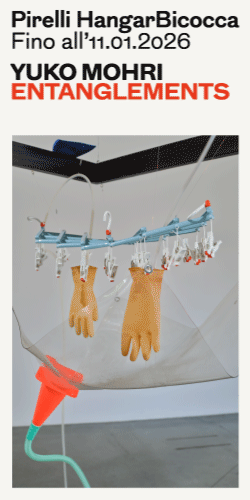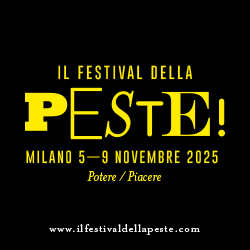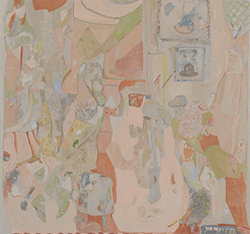
Nelle stanze delle Galleria Civica di Modena l’arte visiva e la ricerca musicale si uniscono nelle opere di Ryochi Kurokawa in una mostra che proietta il corpo dello spettatore in una dimensione altra, una nuova realtà nella quale i colori possono essere ascoltati e i suoni possono essere visti.
La mostra Ryochi Kurokawa. al-jabr nello storico palazzo modenese appare come una sorta di coronamento di un percorso iniziato proprio in questi spazi con la performance “Parallel Heads” per NODE Festival qualche anno fa.
Le opere di Kurokawa mettono in luce uno strettissimo rapporto tra arte e scienza grazie al quale l’artista giapponese porta il cosmico a livello umano. Il ciclo vitale di una stella viene così condensato in quattro minuti da unfold, un’installazione nata dalla raccolta di dati attraverso un telescopio, e il microcosmo trova la propria rappresentazione sui sette schermi posti ad elica di ad/ab atom in cui il suono diffuso su quattro canali indipendenti assume la dimensione spaziale.
La ricerca artistica attraverso il mondo naturale continua nelle stampe e sculture allestite in stanze bianche e luminose in netto contrasto con l’oscurità delle installazioni sonore precedenti. Nella serie di stampe elementum e nelle sculture renature::bc-class la natura scomposta nei suoi elementi torna a ricomporsi grazie all’aiuto di un algoritmo in un nuovo insieme digitale che non vuole essere un sostituto dell’originale, ma un possibile altro.

Guendalina Piselli: Your pieces represent all the levels of nature, from the clearest, most visible one to the microscopic, through the cosmic dimension. Why does nature fascinate you so much?
Ryochi Kurokawa: Since I was grown in a country side, nature triggers me to think from my childhood. It has been keeping giving me hints and discoveries, and spontaneously nature became fundamental component on my art work.
GP: Physically speaking sound and light are two very different elements but in the real world they seem to move together inseparably. The human body feels this union automatically and your pieces seem to recreate the same process in a some sort of another different reality, a new one…
You started as musician and music is still an essential part of your work. Which is the science role in your artistic research, in creating the synesthesia in your works?
RK: Science is influencing me a lot even for my non-scientific artworks, but I don’t use scientific source for synesthetic artwork. I have never had any synesthetic experiences though this neurological phenomenon is one of my main axises from early in my career.
Awareness of synesthetic perceptions are individually differ, however my work provides phenomena which could be shared, so in that way my work might be close to sensus communis such as sound symbolism.

GP: How did you get so involved in science?
RK: I originally have strong interest on science, especially physics. Physics is describing the nature, it’s natural law. It’s fascinating me a lot. I’m treating natural law as nature itself.
GP: Usually you present your work as performances. Is there any differences when you set up an exhibition instead?
RK: Yes, it’s different, for instance how to design the time, but maybe difference is bigger between project concept than project format such as concert or installation.
GP: On the presentation text of your show “al-jabr” at Galleria Civica di Modena, the title is connected to to the ancient tecnique of “kintsugi”. How is you relationship with the past and with tradition?
RK: “al-jabr” is Arabic word meaning “reunion of broken parts”. This term is expressing well common feature of artworks which are shown in this exhibition. Reconstruction of nature:deconstruct and rebuild, is one of my main axises, al-jabr is well representing also this manipulation. “kintsugi” is the expression by curator on this title/exhibition, and I found it’s very interesting approach too, however my works are not related directly to the tradition nor to the past.














